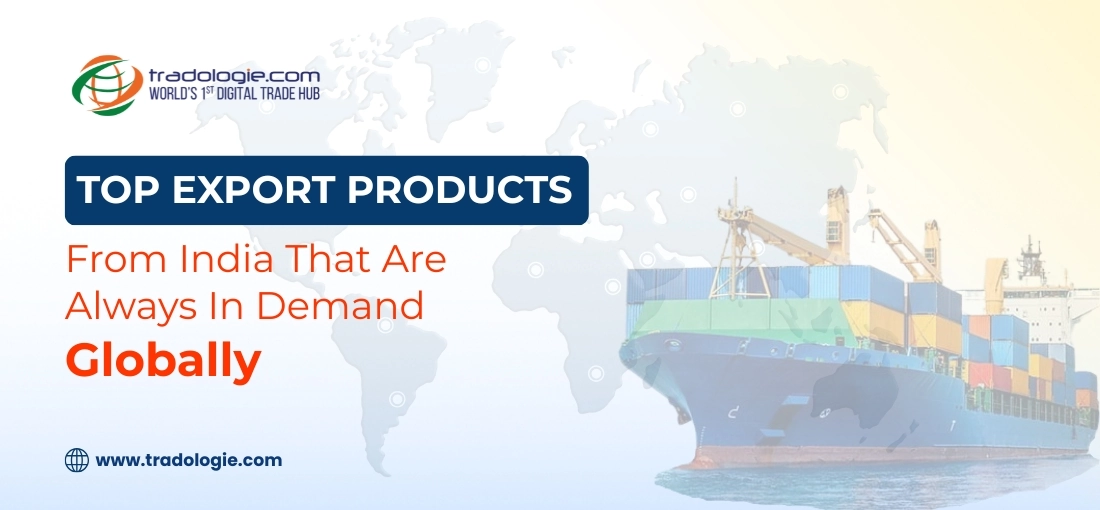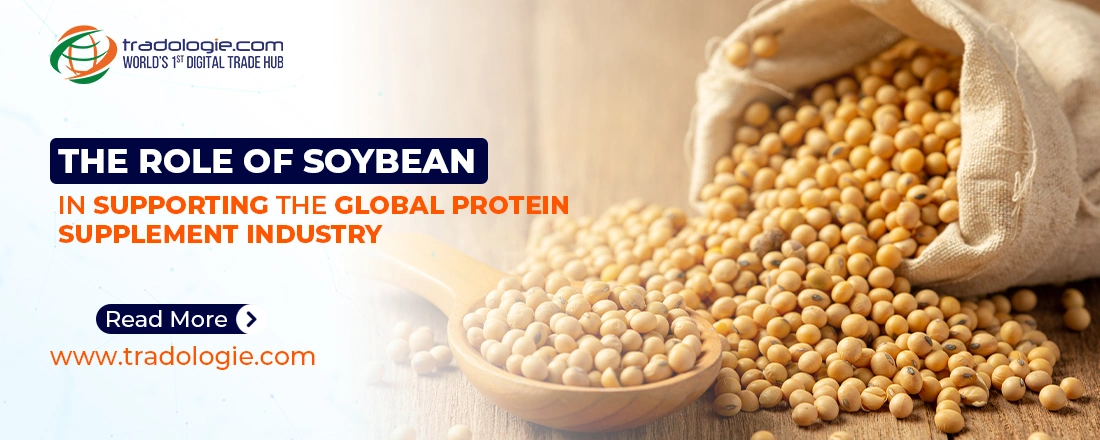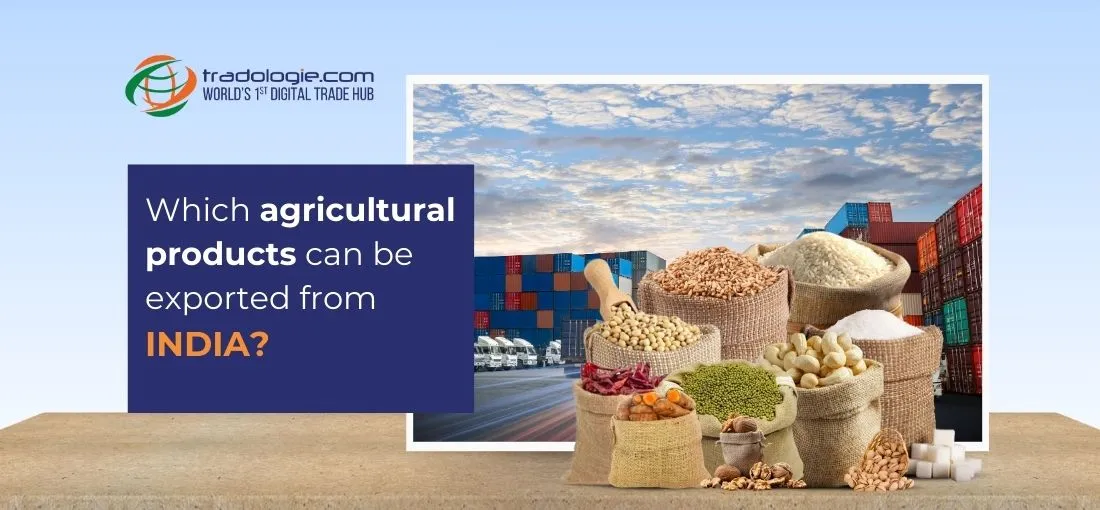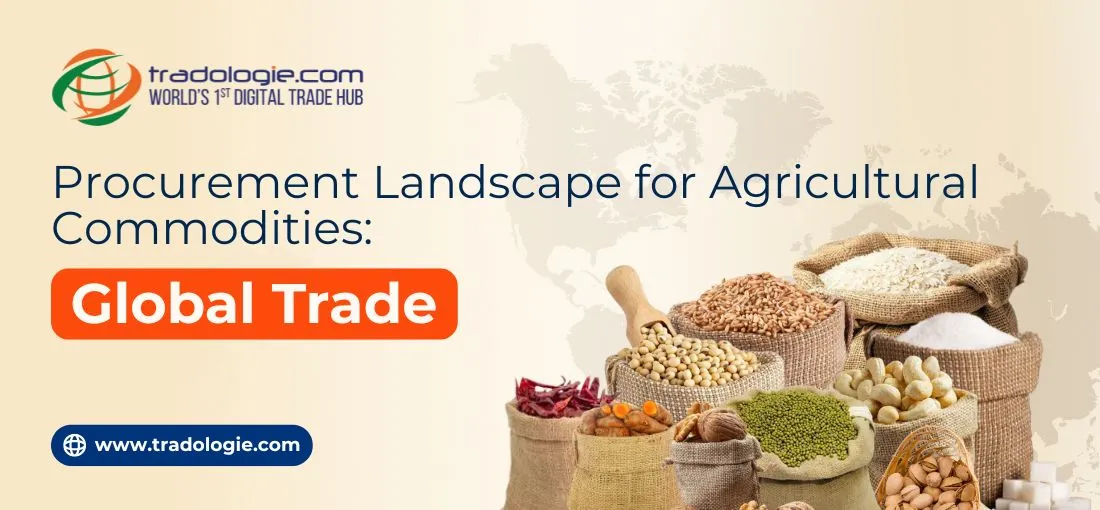Top Agro Export Products from India That Are Always in Demand Globally
India is among the most reliable and volume-ready agri-exporting economies in the world. It plays a significant role in addressing procurement requirements across institutional buyers, food processors, and wholesale importers. This is achieved through an integrated mills-to-port ecosystem, scalable commodity clusters, and overall steady fulfilment capabilities of rice, wheat, sugar, meat, Spices, and cotton.
As per the APEDA Annual Report 2023-24, India's agricultural exports reflect not only its production strength but also its ability to serve a dynamic and quality-conscious global market. For B2B exporters, understanding which commodities form the backbone of Indian agri-exports is essential for building long-term export strategies.
Rice: India's Largest Commodity in Volume and Value
India continues to lead the global rice trade, accounting for over USD 10.4 billion in combined rice exports and caters to the bulk needs of rice importers. With unmatched production scale and export-oriented supply chains, Indian rice is the cornerstone of food security and staple distribution programs worldwide.
Basmati Rice exports totaled USD 5.84 billion in FY 2023-24. Known for its aroma, grain length, and premium appeal, it remains the preferred SKU among large-scale buyers in the Middle East, Europe, and North America. Leading rice exporters from India are aligned with specifications demanded by retail brands and private label packers across these markets.
Non-Basmati Rice shipments stood at USD 4.57 billion, serving institutional buyers, food assistance programs, and processing units in Africa, Southeast Asia, and Latin America. Its pricing advantage and consistent supply make it a first-choice for the rice importers.
India's rice trade edge is reinforced by strong inland logistics, bulk container availability, and consistent sourcing hubs, allowing rice exporters and millers to meet destination-specific compliance, grade requirements, and shipment timelines with scale.
Spices: High Quality Commodity Quality Concerned Spices Importers
India's global leadership in the spice trade is anchored in both volume strength and origin identity. Indian spices are critical raw materials for food processing industries, FMCG production, and hospitality procurement across continents.
According to APEDA, FY 2023-24 saw exports of:
- Chilli at USD 1.509 billion
- Cumin at USD 700 million
- Turmeric at USD 227 million
- Spice oils and oleoresins at USD 498 million
- Cardamom at USD 121 million
For spices importers, India offers scale, variety, and integrated grading capabilities. From bulk 50kg sacks for industrial processors to vacuum-sealed value-added packs for retail fillers, the supply ecosystem is built for versatility. India's strength lies in dedicated clusters like Guntur (Chilli), Unjha (Cumin), and Erode (Turmeric)—each connected to labs, fumigation units, and certified processing centers that align with EU, U.S., and GCC import standards.
Sugar: A Regulated But Strategic Commodity
In FY 2022-23, India exported USD 5.77 billion worth of sugar and served the needs of wholesale buyers and government procurement agencies across key global markets. However, in FY 2023-24, sugar exports were reduced to USD 1.99 billion due to redirection toward domestic ethanol production under India's biofuel policy.
For bulk sugar importers, India remains a key origin, but with policy-linked availability. Importers looking to secure Indian-origin sugar must monitor export quotas, seasonal production trends, and tender timelines to stay aligned with procurement cycles.
Buffalo Meat: High-Volume, Certified Export
India's buffalo meat exports an enormous USD 3.7 billion in FY 2023-24. It is majorly exported to Middle Eastern, Southeast Asian, and African countries with certifications aligned to their regional needs. The demand remains consistent due to India's vertically integrated slaughterhouse infrastructure, traceability systems, and competitive pricing. India offers a compliant and stable protein sourcing option for institutional meat buyers and importers in the HORECA segment,
Cotton: India's Contribution to Global Textile Supply Chains
India's cotton exports reached USD 6.78 billion in FY 2023-24, supplying raw fibre to textile mills in countries like Bangladesh, Vietnam, and China. Indian cotton is particularly preferred for medium-staple and blended applications, ensuring continuous demand among yarn manufacturers.
For commodity trading firms and institutional buyers, India provides strong seasonal predictability and containerized shipment infrastructure, supporting high-frequency trade flows.
Processed Food and Value-Added Agri Products
India also exported USD 1.65 billion worth of miscellaneous processed food products in FY 2023-24. This includes plant-based mixes, dehydrated ingredients, spice blends, and ready-to-cook (RTC) components which are exclusively tailored to bulk procurement formats.
These SKUs are vital to building scalable offerings without compromising on price or shelf life, especially for food service chains, branded retail buyers, and industrial kitchen contractors. Indian manufacturers are also strengthening their foothold in value-added product trade and are catering to the increasing demand for private label customization and B2B packaging standards,
Conclusion: India is Built for B2B Agri-Commodity Execution
India's leadership in the global agri-export space is not incidental—it is a result of commodity-specific expertise, logistics readiness, and multi-origin access points that support institutional-scale procurement.
From rice and spices exporters to meat suppliers and processed goods manufacturers, Indian trade entities are deeply aligned with international buyer requirements. Whether it's contract volume fulfillment, Incoterm-specific pricing, or compliance with destination-country norms, India remains a central node in the global agri-sourcing network.
For bulk buyers, commodity traders, and food manufacturers, partnering with verified Indian exporters continues to offer long-term reliability, trade flexibility, and cost-efficiency.



.webp)

